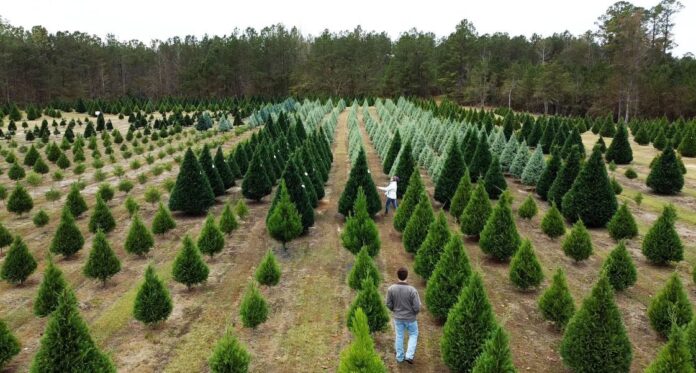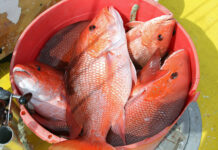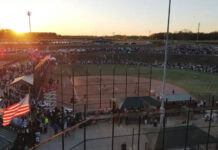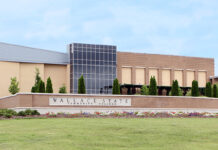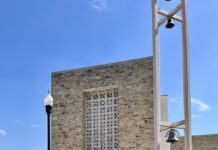AUBURN UNIVERSITY, Ala. — There is nothing quite like the scent of Christmas trees. These natural living room centerpieces are beloved and provide an aesthetic that fits the season. However, choosing the right tree and caring for it can be a daunting task. An Alabama Cooperative Extension System expert offers a guide to choosing and purchasing Christmas trees in 2023.
Industry hurdles
A 2023 survey from The Real Christmas Tree Board (TRCTB) — a national research organization funded by North American Christmas tree growers — indicated that 25% of TRCTB members would be increasing prices by five to 15% in 2023. This is a decrease from last year when approximately 71% of members increased their wholesale prices by the same percentages.
Input costs from labor, fertilizer, equipment and other expenses have increased by 10% annually. More than half of TRCTB tree farmers indicate that this is the same situation for the 2023 growing season.
Today, even though Christmas trees are more expensive to grow, most farmers are choosing not to dramatically raise prices so families will have even more opportunity to pick out their perfect tree.
On the farm
Christmas tree shoppers could see a small price increase in both precut lot trees and farm-grown trees. This is because of the input that it takes to grow the best quality tree. Steve Mannard of Fish River Farms in Baldwin County said he sums up the 2023 growing season in one word.
“The best way to describe this year was challenging,” Mannard said. “Cold temperatures in the spring caused certain trees to brown in the tops and the sides. Some trees even stopped growing in July due to excessive heat and flash droughts in summer. It was the most environmentally difficult year to work in my 42 years of Christmas tree farming.”
Mannard said input costs have gone up substantially over the last two years. Fertilizer, chemicals and labor costs, especially, have been the most impactful to Fish River Farms’ operation. However, the good news is Mannard’s trees were resilient in the end.
“They are growing more normally now with our moderate temperatures,” he said. “There may have been some lost growth, but we were blessed with resilient trees. We have a great crop for families this year.”
Choosing your tree
Alabama Extension Commercial Horticulture Assistant Professor Jeremy Pickens said Christmas tree farms typically open the day after Thanksgiving. However, many choose to open earlier to ensure that families have plenty of opportunities to purchase a tree.
“If you want to get an Alabama-grown tree, then you should go early,” Pickens said. “Growers are selling out earlier and earlier each year due to a rapid increase in demand.”
The first step to purchasing a Christmas tree is to determine which species of tree is preferred in your home. Most lot trees are Douglas and Fraser firs, which have the classic Christmas tree smell combined with strong, robust branches for heavy ornaments. However, these species do not grow well in Alabama, meaning the firs you see on lots are delivered from cold-climate states.
More species consumers will find at choose-and-cut farms in Alabama include Murray cypress, Arizona cypress, Leyland cypress, Eastern red cedar and Virginia pine. These species typically have fuller foliage than Northern firs and have branches best suited for lighter ornaments. None of these trees are considered more valuable than the other.
To ensure your tree lasts through Christmas, Pickens suggests buying a fresh-cut tree from a local choose-and-cut operation or buy precut trees with their bases stored in water.
“Trees that were stored in water will last longer because they have been kept hydrated,” Pickens said.
Caring for your tree
The best insurance policy for a healthy Christmas tree is always keeping the water reservoir full.
“I check my tree daily until I get a feel for its water use,” Pickens said. “If you are unable to bend down to check, construct a dip stick. Just take any rod (broom handle, pool stick, fishing rod, etc.) and mark the depth of the water bowl on the side. Check the water level by dipping the stick in the water bowl to reveal a water mark. It’s similar to checking your automotive oil.”
Be sure to keep the dip stick vertical as possible when checking. This practice will ensure the most accurate water-level reading. If the tree is placed in an area exposed to heat (HVAC or fireplace), consider moving the tree away from heat sources or closing the appropriate vents. While not completely necessary, keeping the room temperature slightly lower and reducing direct sunlight exposure will also help the tree’s need for daily water.
Disposal
When it is time to finally take down Christmas decorations, there are some appropriate options for tree disposal.
“Check with your local municipalities, as some have tree collection points,” Pickens said. “These trees are often turned into mulch and sometimes the mulch is free.”
A popular method of tree repurposing is to place them in ponds or lakes to serve as fish bed structure. Some people also use them to start a bonfire during the winter. However, everyone should heed caution when burning a dry Christmas tree, as the hot fire can get away quickly.
Worth the wait
After the long days on the Christmas tree farm performing hands-on care, tree farmers may wonder whether their season will provide.
“At this time of year, I always ask, ‘Will anyone show up?’,” Mannard said. “When I see the cars pull up and kids begin to run around, I know that this was worth all that hard work. It’s a good feeling to know that people want your product.”
Alabama Extension is instrumental in helping growers implement proven practices and methods. Pickens has a prosperous working relationship with farmers in the state. He serves as a representative on the Southern Christmas Tree Board and also performs fertilizer experiments on Mannard’s farm.
“The most important part of Extension, especially if you’re a new grower, is that they can help with unique technicalities that come with Christmas tree growing,” Mannard said. “If you don’t seek help, you may invest a lot of money and not sell a tree in the end. The first thing growers should do is get involved with their local Extension office.”
Discover more
To find a farm or retailer, explore the location tool from TRCTB (www.realchristmastreeboard.com/find-a-retailer) and search using a zip code. Consumers may filter results by choose-and-cut farms, garden centers, home improvement stores and more. To learn more about Christmas trees, visit the Alabama Extension website, www.aces.edu.

